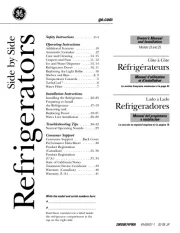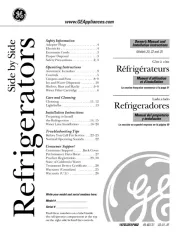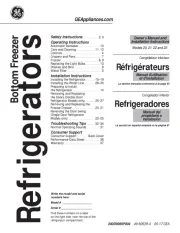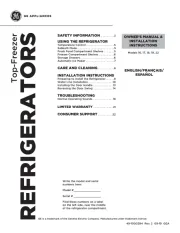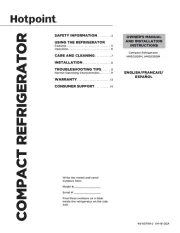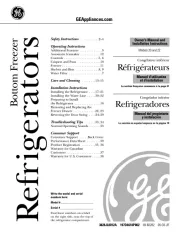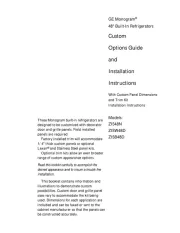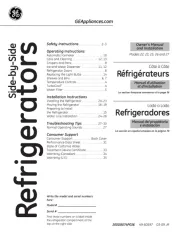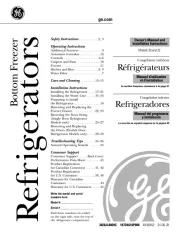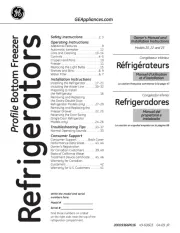GEAppliances.com
Refrigerators
Side by Side
200D8074P051 49-60646-3 03-14 GE
La section française commence à la page 40
La sección en español empieza en la página 75
Safety Instructions .................2–3
Operating Instructions
Automatic Icemaker . . . . . . . . . . . . . . . . . .12,13
Care and Cleaning . . . . . . . . . . . . . . . . . . .15,16
Crispers and Pans . . . . . . . . . . . . . . . . . . . . . . .11
ExpressChill™ .............................5
Ice and Water Dispenser . . . . . . . . . . . . . . . .14
Refrigerator Doors . . . . . . . . . . . . . . . . . . . . . .10
Replacing the Light Bulbs . . . . . . . . . . . . .16,17
Shelves and Bins . . . . . . . . . . . . . . . . . . . . . . .8, 9
Temperature Controls . . . . . . . . . . . . . . . . . . . . 4
TurboCool™ ..............................5
ClimateKepper2 . . . . . . . . . . . . . . . . . . . . . . . . . . 5
Water Filter ..............................7
Installation Instructions
Installing the Refrigerator . . . . . . . . . . . . 23–26
Moving the Refrigerator . . . . . . . . . . . . . 19–22
Preparing to Install
the Refrigerator . . . . . . . . . . . . . . . . . . . . . . . . .18
Water Line Installation . . . . . . . . . . . . . . 27–29
Troubleshooting Tips . . . . . . . . . . . . 31–33
Normal Operating Sounds . . . . . . . . . . . . . . .30
Consumer Support
Consumer Support . . . . . . . . . . . . . Back Cover
Performance Data Sheet . . . . . . . . . . . . .34,35
State of California Water
Treatment Device Certificate . . . . . . . . . . . . .36
Warranty (U.S.) . . . . . . . . . . . . . . . . . . . . . . . . . .37
Warranty (Canadian) . . . . . . . . . . . . . . . . . . . .38
Product Registration (Canadian)
. . . . . . . . . 39
Notes ...................................40
Réfrigérateurs
Côte à Côte
Refrigeradores
Lado a Lado
Models 22, 23, 25,26,27 and 29
Write the model and serial numbers here:
Model # _________________________
Serial # __________________________
Find these numbers on a label inside the
refrigerator compartment at the top on the
right side.
Owner’s Manual
and Installation
Manuel d’utilisation
et d’installation
Manual del propietario
e instalación

